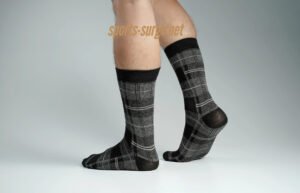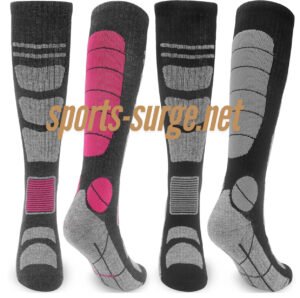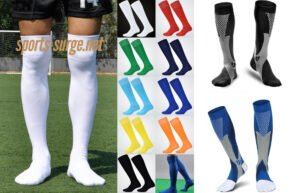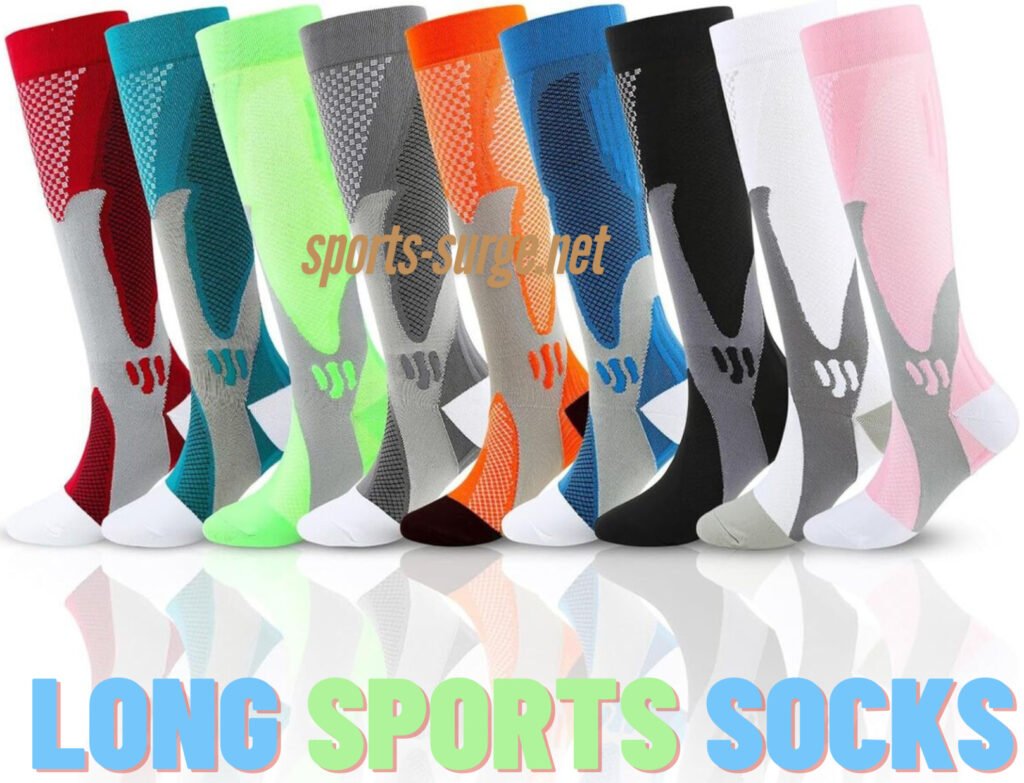Long sports socks have evolved from mere athletic accessories to essential components that enhance performance, provide protection, and make fashion statements. In 2024, their significance spans various sports and fashion trends, reflecting advancements in materials, design, and cultural preferences.
Table of Contents
ToggleHistorical Context and Evolution
Historically, long socks were integral to sports uniforms, offering protection and uniformity. In football (soccer), for instance, they secured shin guards and provided leg coverage, reducing injuries. Over time, their role expanded beyond functionality to include aesthetic appeal, with teams and athletes using them to express identity and style.
Functional Benefits of Long Sports Socks

- Muscle Support and Compression: Long sports socks often incorporate compression technology, providing support to calf muscles and enhancing blood circulation. This support reduces muscle fatigue and accelerates recovery, benefiting athletes during and after intense activities.
- Injury Prevention: Covering the lower leg, these socks protect against cuts, abrasions, and impacts from equipment or other players. In sports like football, they hold shin guards in place, crucial for safeguarding against injuries.
- Temperature Regulation: Advanced materials in long sports socks wick moisture away from the skin, keeping feet dry and comfortable. They also provide warmth in colder conditions and aid in cooling during heat, maintaining optimal foot temperature.
Material Innovations

The evolution of materials has significantly impacted the functionality of long sports socks:
- Moisture-Wicking Fabrics: Materials like polyester and nylon blends effectively draw sweat away from the skin, reducing the risk of blisters and discomfort.
- Sustainable Materials: With a growing emphasis on environmental responsibility, socks made from organic cotton, bamboo, and recycled fibers have gained popularity, aligning with eco-friendly fashion trends.
Sports-Specific Applications
- Football (Soccer): Long socks are standard, providing muscle support and securing shin guards. Some players cut holes in their socks to relieve calf pressure and prevent cramping, a practice gaining attention in professional leagues.
- Running: Runners utilize long compression socks to improve blood flow, reduce muscle soreness, and protect against debris on trails. They also offer UV protection during long runs under the sun.
- Basketball: Long socks provide ankle support and reduce friction, preventing blisters during quick movements on the court. They also contribute to muscle support and temperature regulation.
Fashion Trends in 2024

Long sports socks have transcended athletic use, becoming fashion statements:
- Bold Patterns and Colors: 2024 has seen a surge in vibrant designs, with socks featuring geometric shapes, stripes, and bright colors, allowing individuals to express personal style.
- Retro Revival: Nostalgic designs from the ’70s, ’80s, and ’90s have returned, with classic logos and neon colors making a comeback in sock fashion.
- High Socks Trend: Among younger generations, particularly Gen Z, mid-calf and knee-high socks have become popular, often worn with various footwear, including sandals, challenging previous fashion norms.
Cultural Significance
The choice of sock length has sparked generational debates, with younger individuals favoring higher socks as a fashion statement, while older generations may view them differently. This shift reflects broader cultural trends and the cyclical nature of fashion.
Choosing the Right Long Sports Socks
When selecting long sports socks, consider the following:
- Activity-Specific Design: Choose socks tailored to your sport, as different activities have unique requirements.
- Material Composition: Opt for materials that offer moisture-wicking properties and appropriate cushioning.
- Compression Levels: For enhanced muscle support and recovery, consider socks with suitable compression levels.
- Sustainability: If environmental impact is a concern, look for socks made from sustainable materials.
Conclusion
Long sports socks have become multifaceted accessories, blending functionality with fashion. Advancements in materials and design have enhanced their role in athletic performance and injury prevention. Simultaneously, they serve as expressions of personal style, bridging the gap between sportswear and everyday fashion. As trends continue to evolve, long sports socks remain a staple, adapting to the diverse needs and preferences of individuals worldwide.
FAQs about Long Sports Socks
Why do athletes wear long sports socks?
Athletes wear long sports socks for several reasons:
- Protection: They cover shin guards and provide a barrier against cuts and abrasions.
- Muscle Support: The compression offered by long socks supports calf muscles, reducing fatigue and the risk of cramps.
- Performance Enhancement: By improving blood circulation, they help in better oxygen delivery to muscles, enhancing performance.
- Uniformity: Long socks contribute to a cohesive team appearance.
In football, for example, long socks are essential for securing shin guards and preventing injuries.
What materials are best for long sports socks?
The ideal materials for long sports socks include:
- Merino Wool: Offers natural moisture-wicking and odor-resistant properties.
- Synthetic Blends (e.g., Nylon, Polyester): Provide durability and effective moisture management.
- Spandex or Elastane: Adds elasticity for a snug fit.
These materials ensure comfort, durability, and performance during athletic activities.
How do compression long sports socks benefit athletes?
Compression long sports socks offer benefits such as:
- Enhanced Blood Circulation: Improves oxygen supply to muscles, boosting performance.
- Reduced Muscle Soreness: Minimizes muscle oscillation, leading to less fatigue.
- Faster Recovery: Aids in quicker removal of lactic acid, reducing cramps and stiffness.
These advantages make them popular among athletes for both performance and recovery phases.
Why do some football players cut holes in their long socks?
Some football players cut holes in their long socks to:
- Alleviate Calf Pressure: Tight socks can compress calf muscles excessively, leading to discomfort and cramps. Cutting holes reduces this pressure.
This practice has been observed among players like Jude Bellingham and is aimed at enhancing comfort during play.
Are long sports socks suitable for all sports?
Long sports socks are suitable for various sports, including:
- Football (Soccer): For shin protection and muscle support.
- Basketball: To provide ankle support and reduce friction.
- Running: Compression variants aid in circulation and recovery.
However, the suitability depends on the sport’s specific requirements and personal comfort.
How should I care for my long sports socks to ensure longevity?
To maintain the quality of long sports socks:
- Washing: Turn them inside out and wash in warm water with like colors. Avoid bleach and fabric softeners.
- Drying: Air dry or tumble dry on a gentle setting without dryer sheets.

